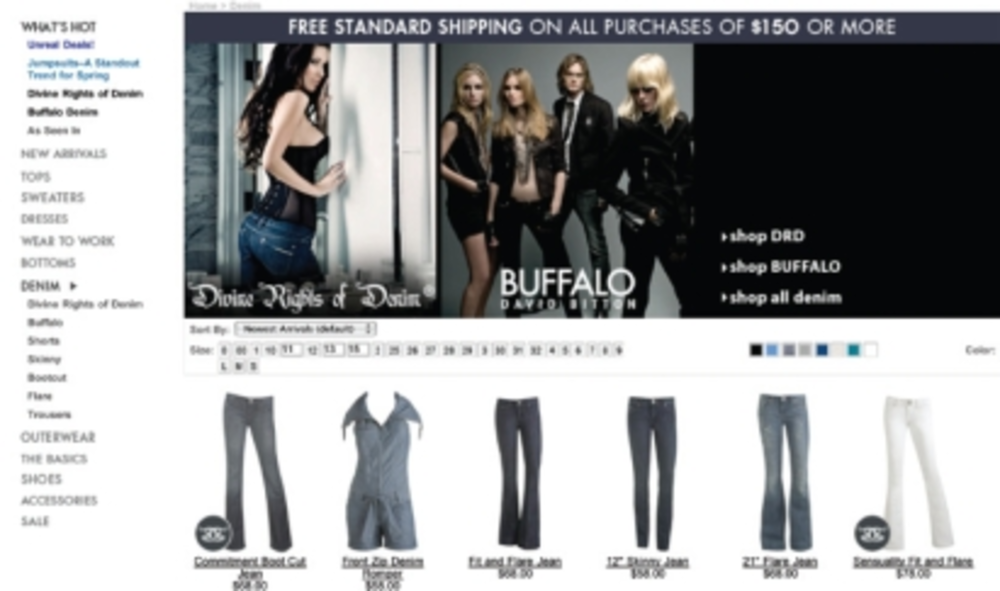Marketing to young women can be a tough task, particularly for a multichannel retailer that wants to target its on-the-go female consumers using the right marketing channels. That was the challenge facing Wet Seal Inc., a Foothill Ranch, CA-based apparel retailer that owns nearly 400 Wet Seal stores and 95 Arden B. stores across the US. The two brands – Wet Seal and Arden B. – target two different demographics: Wet Seal appeals to fashion-forward teens and young adults ages 15 to 25, while Arden B. skews slightly older – 20- to 35-year-olds – with value-conscious contemporary collections.
These computer-devoted, cell-phone-toting women, who are just as comfortable shopping online as in the store, can sometimes feel like a moving target across channels — and the two different groups also prefer to be connected with differently, says Jon Kosoff, director of e-commerce and direct marketing at Wet Seal Inc.
“They are different, especially with all the new technology, in the way they interact with us and their friends,” he says. For the Wet Seal loyalty program, he explains, the company collects e-mail addresses and is also testing some text messaging campaigns. However, the Arden B. audience still likes traditional mail as well as e-mail, and the company does not yet text to them.
In order to encourage its young women prospects to become frequent shoppers at the stores, Wet Seal has become known for its high-profile music and entertainment partnerships with bands such as Fall Out Boy and Maroon 5 and movies such as Nick & Nora’s Infinite Playlist.
“It’s important for our brand to be associated with top entertainment because it’s really what our customer is interested in, whether it’s a celebrity or a movie,” says Kosoff. But the company needed a better way to target its database with follow-up e-mails and text messages about the partnerships and promotions.
The company began working with e-mail services provider e-Dialog in mid-2006 because it lacked a full, high-end CRM database to take advantage of the millions of names on its lists. Wet Seal knew that e-mail marketing was the channel that would best reach both the Wet Seal and Arden B. groups, so it needed a solution that focused on the dual strengths of data and e-mail marketing. “We set up a daily data feed so we could do the kind of trigger mailings we couldn’t do before,” says Kosoff.
For example, in the past, if someone signed up for either the Wet Seal or Arden B. loyalty programs, the company couldn’t send them an e-mail right away. “We didn’t have that link between in-store purchases and e-mail,” he explains. “Now I can send it in two days after someone joins.”
Ben Ardito, VP of professional services at e-Dialog, agrees that Wet Seal needed more flexibility with its data, which the company’s Insight Builder tool provided.
“It didn’t have the view into its data that would give them the speed to market it was looking for,” he explains. “Building segments that can be targeted on an ongoing basis throughout the lifecycle was the biggest attraction for a company like Wet Seal.”
The basic segmentation is based on in-store and online behavior as well as RFM (recency, frequency, monetary) data and special events – such as if a customer joins a loyalty program or if they are a best customer. “Then we’ll also send out e-mail promotions about in-store events that would drive to the store or the Web site,” he adds.
And those messages have great granularity, says Ardito. “You can look into a group that is really small and targeted, that can be repopulated and have an automated query every month,” he explains.
As for the text messaging campaigns for the Wet Seal group, they are still in the testing phase. “About two or three years ago our CEO was very forward-thinking and during online registration we started asking for text opt-ins,” Kasoff says.
For any multichannel retailer, consumers are demanding more relevant messaging, says Ardito. But without the right data and analysis, that kind of messaging is close to impossible. “If a marketer doesn’t have the access to that data, to do the analysis to see where key behaviors are beginning and ending or where key attributes are, then it can’t build out campaigns to be relevant,” he says.
And for a retailer in a tough economic environment complete with shrinking budgets, that’s even more important, Kosoff explains. “With our limited internal resources it’s about how we can do segmentation that talks to our specific customer that likes, for instance, tops or dresses,” he says.
With open rates for trigger mailings exceeding industry averages and regular campaigns seeing good success, Kosoff knows that his team is in tune with his customers.
“We have a good marketing team and we do a lot of customer research, so I think we do a good job of speaking to our customers,” he says. The difference today, he explains, is that the company can make its messages more relevant and timely for the consumer. “It’s about learning more about triggers, testing our triggers and improving our triggers,” he says.








